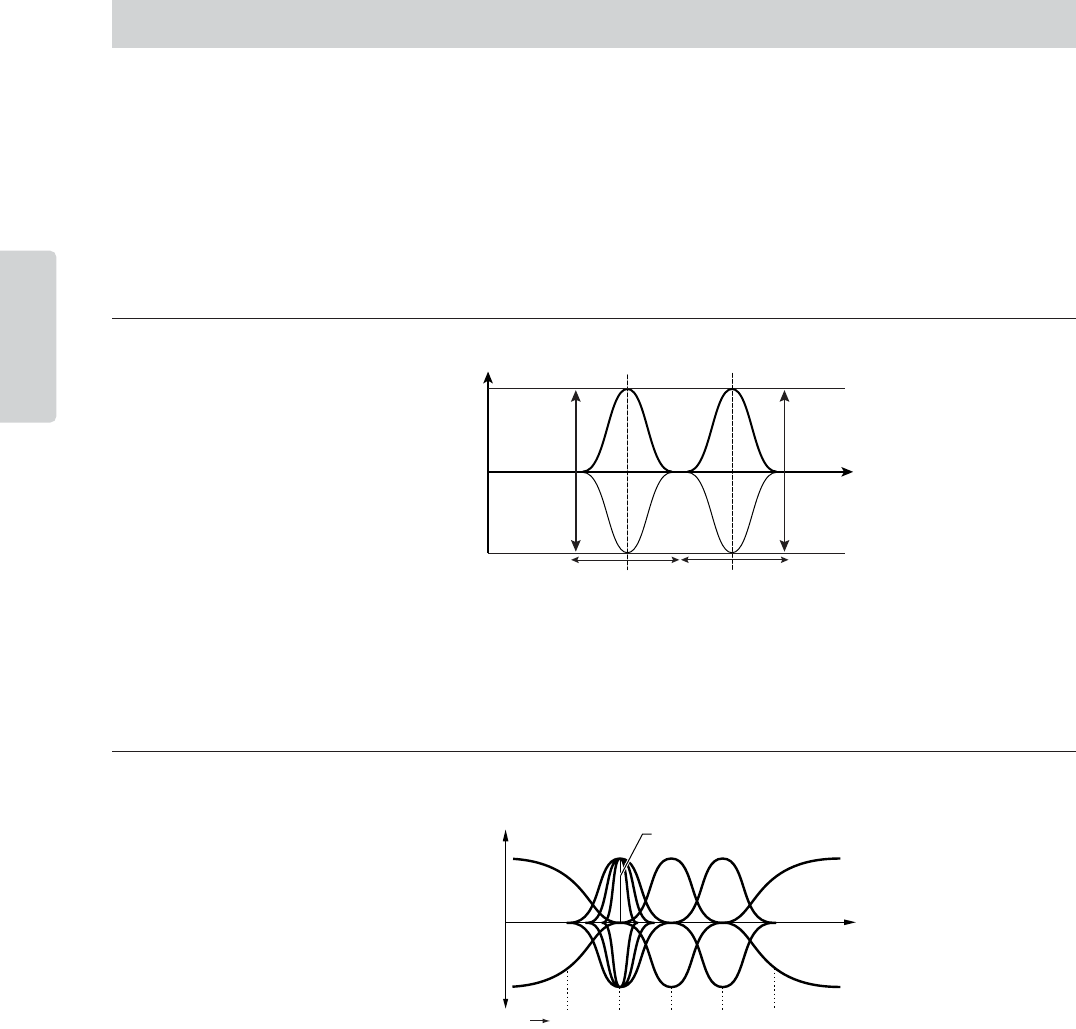
Quick Guide
CP300 Owner’s Manual
36
Basic Operation
Usually an equalizer is used to correct the sound output from amps or speakers to match the special character
of the room, or to change the tonal character of the sound. EQ divides the sound into several frequency bands,
and adjustments are made by raising or lowering the level of each band.
By adjusting the sound according to the genre—classical music being more refined, pop music more crisp, and
rock music more dynamic—you can draw out the special characteristics of the music and make your
performance more enjoyable.
Two separate EQ sections are available on the instrument: Part EQ and Master EQ.
Part EQ
The Part EQ is applied to each Voice.
n You can adjust the part’s low and high frequency via the “EQ Low Freq.” and “EQ High Freq.” parameter in the
Voice Edit menu. You can also adjust the part’s low- and high-range gain via the “EQ Low Gain” and “EQ High
Gain” parameters (pages 60, 61).
Master EQ
Master EQ is applied to the final, overall (post-effect) sound of the instrument.
When the corresponding slider is set to center, the equalizer level is set to normal.
n You can adjust the Q (frequency bandwidth) and Frequency parameters via the Master EQ Edit menu (page 72).
However, the last gain setting by the slider or Master EQ Edit menu will remain in effect.
n While the “Equalizer Lock” parameter (page 71) in the Other Settings menu is turned on, the Master Equalizer
values will not be affected by Performance recall, incoming MIDI data and Song playback.
Equalizer (EQ)
Gain
Low Gain
High Gain
Freq.
Low Freq. High Freq.
LOW HIGHHIGHMIDMIDLOWMID
–
+
0
5 bands
Gain
Q (frequency bandwidth)
Freq.


















